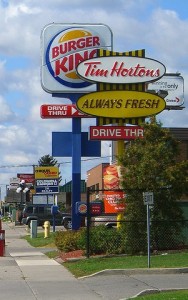 I got an inquiry from a PR firm representing a marketing and branding consultant who wanted to comment on an “off-brand” merger between two unlikely partners.
I got an inquiry from a PR firm representing a marketing and branding consultant who wanted to comment on an “off-brand” merger between two unlikely partners.
“Burger King has agreed to acquire Tim Hortons and will be moving its headquarters to Canada. The deal will create the world’s third largest quick service restaurant company, but with Tim Hortons having been previously owned by Wendy’s and being a huge brand in Canada, it seems a little off-brand [emphasis mine] for the two restaurants to come together under the same all-American portfolio.”
It made me think of another off-brand union of Lands End and Sears.
(I always thought that “off-brand” meant a generic, less expensive alternative… but I don’t think that is what she meant in this case.)
So what makes a union “On-Brand”? What merger might be considered “On-Brand” for your company?
On-brand reasons to merge:
- Same target audience, different seasonality or time of day/month/year,
- Different aisle in the same venue,
- expands the market without cannabalizing sales.
- companies share same values or have a similar mission, goal and objective
- organizations that own a similar positioning (low price leader… or top quality… or outstanding service)
- Complimentary products and services
- Respect for and trust of the other
- Some overlap that could be eliminated for a cost savings
It’s almost like a marriage, you need commonalities, but having complementary skills helps too. Mutual respect, good communications and a commitment to make it work all helps too.
Do you have an example of when your company combined forces with another brand? Good results? Or big mistake? Let me know!
Editor’s note: As I read through the various articles about Burger King and Tim Hortons (here, here and here), I’m not convinced that they are actually thinking about branding together… it’s more about the company ownership and the portfolio of brands. Hey, they are both about food… but it looks like most of their income comes from things other than food!